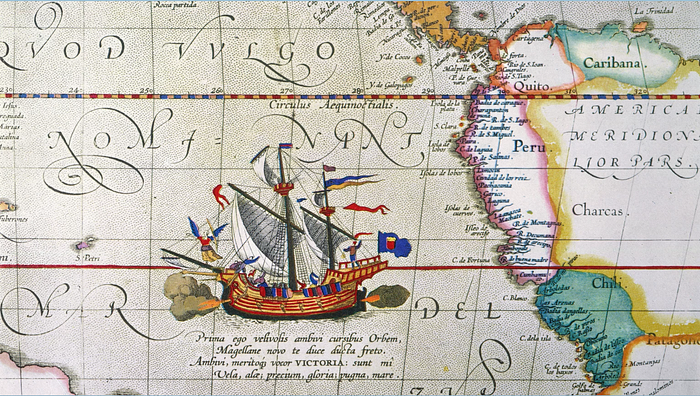“The sea is dangerous and its storms terrible, but these obstacles have never been sufficient reason to remain ashore.” — Ferdinand Magellan

Introduction
In 1519, five ships and about 270 men left Spain on a voyage unlike any other. Their mission? To find a westward sea route to the Spice Islands. What they achieved was far greater — they became the first humans in recorded history to circumnavigate the globe. This is the extraordinary, tragic, and thrilling tale of the Magellan-Elcano expedition.
🌍 Timeline of Major Events
1519 — The Journey Begins
- August 10: The fleet, called the Armada de Molucca, departs from Seville.
- September 20: Sets sail from Sanlúcar de Barrameda into the Atlantic.
1520 — Mutiny and Discovery
- March: The fleet stops in Patagonia for winter.
- April: Mutiny at Port St. Julian; Magellan puts it down harshly.
- October 21: The fleet finds a passage through South America — the future Strait of Magellan.
- November: They enter the Pacific Ocean, naming it for its calmness (“pacificus”).
1521 — Tragedy in Paradise
- March: After 3+ months at sea, they land in Guam, then Philippines.
- April 27: Magellan is killed in the Battle of Mactan by Lapu-Lapu’s warriors.
- Leadership passes to Juan Sebastián Elcano.
1522 — Return Against All Odds
- July: Elcano leads the only surviving ship, Victoria, to the Cape of Good Hope.
- September 6: Victoria returns to Sanlúcar, Spain with only 18 survivors of the original 270.
⚓ Fun and Fascinating Facts
1. The Lost Day Phenomenon
- Upon return, the crew was astonished to find that their calendars were one day behind.
- They had carefully tracked every day, but circumnavigating westward meant they “lost” a day — an early real-world proof of time zone and rotation effects.
2. Ship Names
- Trinidad, San Antonio, Concepción, Victoria, and Santiago.
- Only Victoria survived.
3. Extreme Survival
- In the Pacific, sailors went months without fresh food.
- They ate rats, sawdust, and leather. Scurvy decimated the crew.
4. A Filipino Hero
- Magellan died at the hands of Lapu-Lapu, a local chieftain in Mactan.
- This moment is a symbol of resistance in the Philippines.
5. Circumnavigation Was Not the Goal
- The real mission was to find a westward route to the Spice Islands (modern-day Indonesia).
- Circumnavigation was an unintentional yet historic outcome.
6. The Final 18 Survivors
Among them:
- Juan Sebastián Elcano (captain after Magellan’s death)
- Antonio Pigafetta (chronicler of the voyage)
- 16 others — sailors and crew whose names are remembered in Elcano’s testimony.
🌐 Legacy
- The voyage proved Earth’s roundness in a way no theory could.
- It redrew global maps, shattered limits of imagination, and signaled the beginning of global maritime empires.
- It showed that human will could, quite literally, go around the world.
“The church says the earth is flat, but I know that it is round, for I have seen the shadow on the moon, and I have more faith in a shadow than in the church.” — Ferdinand Magellan
No comments:
Post a Comment